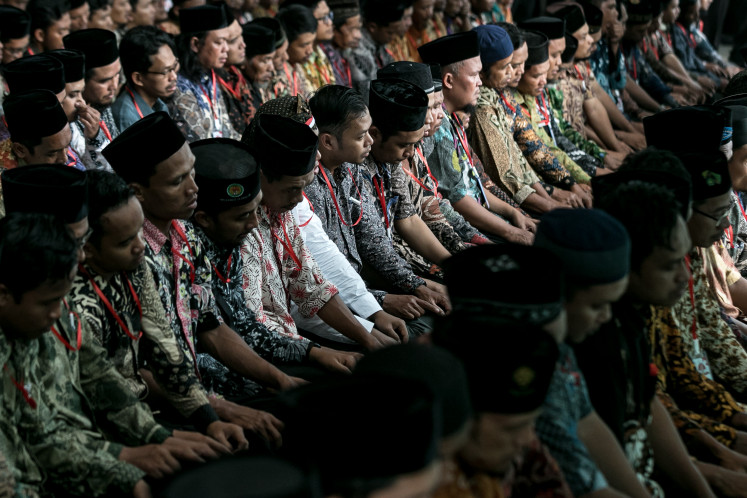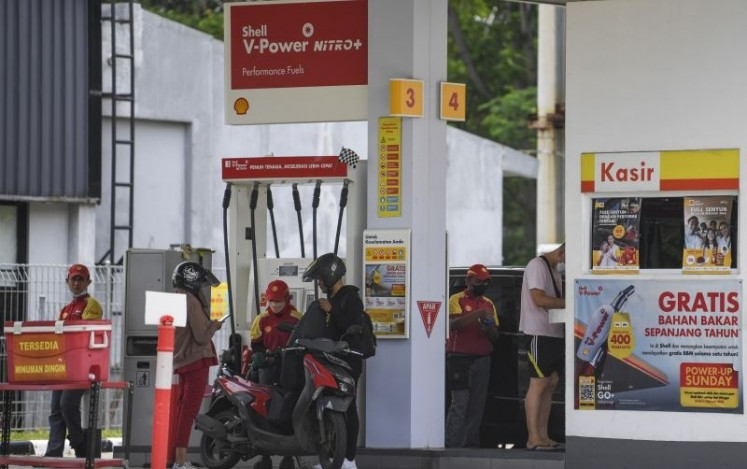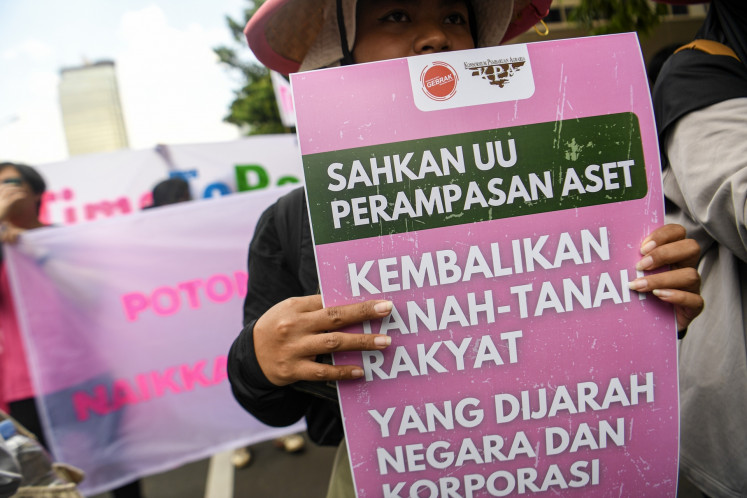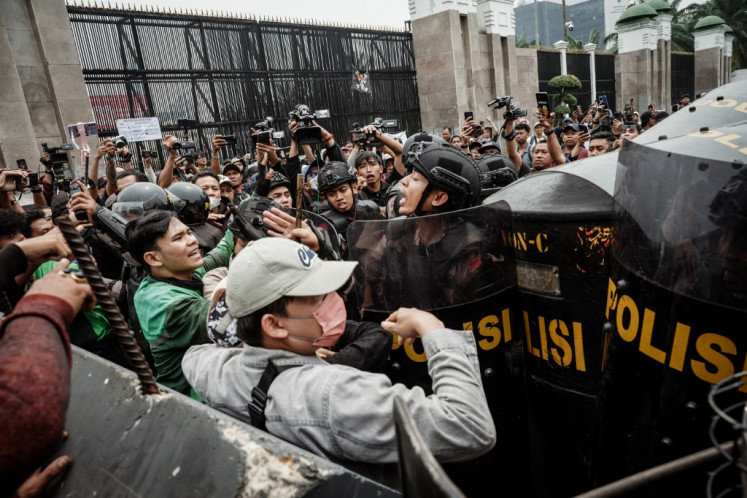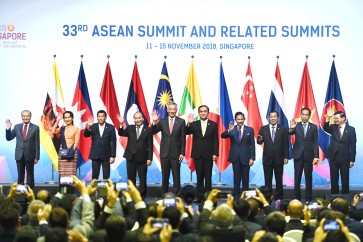Popular Reads
Top Results
Can't find what you're looking for?
View all search resultsPopular Reads
Top Results
Can't find what you're looking for?
View all search resultsASEAN connectivity could be blueprint for world
A well-executed regional connectivity strategy by ASEAN could be a model for many other world regions facing BRI-induced crises in their own backyards. #opinion
Change text size
Gift Premium Articles
to Anyone
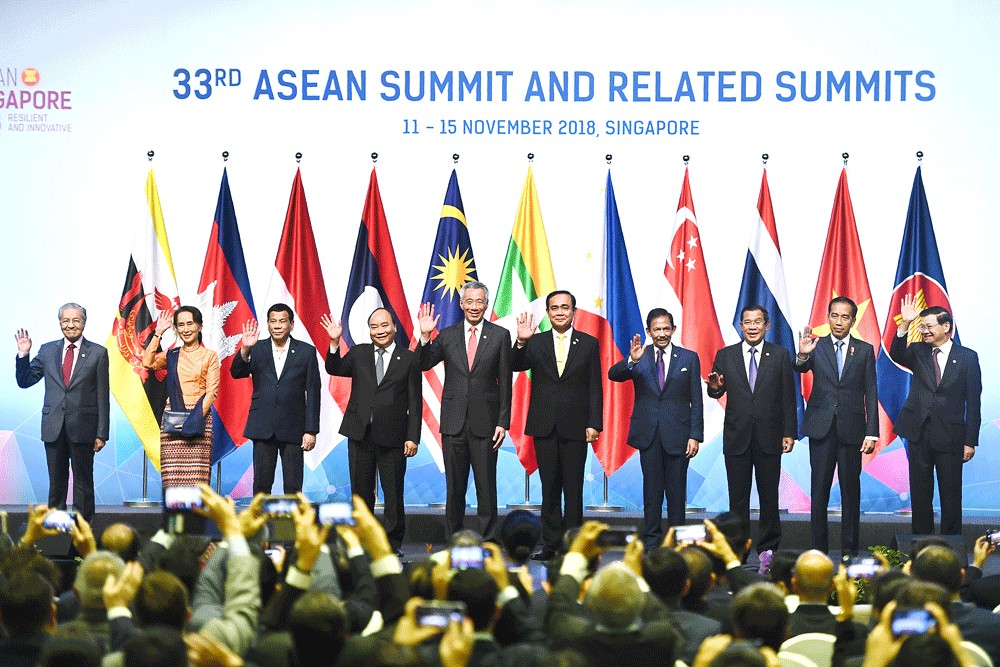 The leaders of ASEAN member states, (from left) Malaysia’s Prime Minister Mahathir Mohamad, Myanmar’s State Counsellor Aung San Suu Kyi, the Philippine’s President Rodrigo Duterte, Vietnam’s Prime Minister Nguyen Xuan Phuc, Singapore’s Prime Minister Lee Hsien Loong, Thailand’s Prime Minister Prayut Chan-O-Cha, Brunei’s Sultan Hassanal Bolkiah, Cambodia’s Prime Minister Hun Sen, Indonesia’s President Joko Widodo and Laos’ Prime Minister Thongloun Sisoulith, pose for a group photo at the opening ceremony of the 33rd ASEAN summit in Singapore. (AFP/Jewel Samad)
The leaders of ASEAN member states, (from left) Malaysia’s Prime Minister Mahathir Mohamad, Myanmar’s State Counsellor Aung San Suu Kyi, the Philippine’s President Rodrigo Duterte, Vietnam’s Prime Minister Nguyen Xuan Phuc, Singapore’s Prime Minister Lee Hsien Loong, Thailand’s Prime Minister Prayut Chan-O-Cha, Brunei’s Sultan Hassanal Bolkiah, Cambodia’s Prime Minister Hun Sen, Indonesia’s President Joko Widodo and Laos’ Prime Minister Thongloun Sisoulith, pose for a group photo at the opening ceremony of the 33rd ASEAN summit in Singapore. (AFP/Jewel Samad)
C
hina’s second Belt and Road Forum in late April brought with it a few innovations. Apparently keen to regain some goodwill, China announced modifications to the multibillion-dollar infrastructure initiative. This includes a closer collaboration with multilateral financial institutions, giving potential projects a more stringent approval procedure.
In addition, China has agreed to set up a mediation panel in cooperation with Singapore, presumably to move away from China-centric dispute settlement mechanisms.
This is clearly a reaction to recent backlashes against the Belt and Road Initiative (BRI), many of which occurred in Southeast Asian countries. Both Thailand and Indonesia have noticeably limited Chinese involvement in their national railway infrastructure over the past five years. In the past year, Malaysia has successfully countered the perceived Chinese “debt-trap diplomacy” by renegotiating the East Coast Rail Link project, and recently agreed to the project at two-thirds of the original price.
It is notable that ASEAN has begun to assert control over its own infrastructural destiny. In fact, the organization has had a connectivity agenda in place for the last decade, publishing its first ASEAN Master Plan for Connectivity in 2010, followed in 2016 by the ASEAN Connectivity Master Plan 2025.
Two and a half years after the launch of the newest connectivity strategy, it i s now time to take stock of Southeast Asia’s progress in the infrastructure game. Short of buying into its own agenda, ASEAN has not backed its connectivity blueprint with a significant funding mechanism.
Founded in 2011, the Asia Development Bank-managed US$300 million ASEAN Infrastructure Fund was never going to serve the region’s annual investment need of an estimated $184 billion for energy, highways, ports and railways. Meanwhile, external partners have been vying for investment opportunities in Southeast Asia and are contributing significantly to national infrastructure development.
And it’s not just China. Under everyone’s noses, Japan has actually been outspending its competitor on Southeast Asian connectivity. Various newcomers are entering an increasingly crowded field, with India, the European Union, South Korea and the United States eager to compete for slices of the pie.





